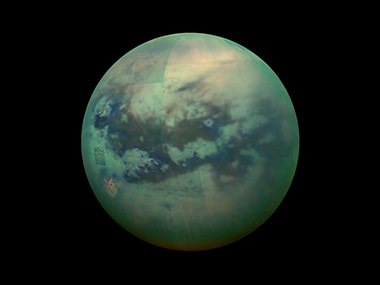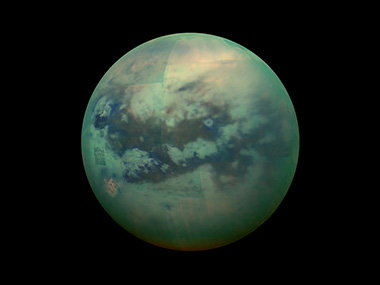Scientists have found that intense methane rainstorms batter Saturn’s largest moon Titan much more frequently than expected, creating massive floods in terrain that are otherwise deserts. The storms occur less than once per **Titan** year — which is 29-and-a-half Earth years — but they appear to have a key role in shaping Titan’s icy surface, said the study published in the journal Nature Geoscience. [caption id=“attachment_4144495” align=“alignleft” width=“380”]  Titan. Image: NASA.[/caption] “I would have thought these would be once-a-millennium events,” said Jonathan Mitchell, Associate Professor of Planetary Science at University of California, Los Angeles (UCLA). “So this is quite a surprise,” Mitchell, principal investigator of UCLA’s Titan climate modelling research group, said. Titan’s surface is strikingly similar to Earth’s, with flowing rivers that spill into great lakes and seas, and the moon has storm clouds that bring seasonal, monsoon-like downpours, Mitchell said. But Titan’s precipitation is liquid methane, not water. “The most intense methane storms in our climate model dump at least a foot of rain a day, which comes close to what we saw in Houston from Hurricane Harvey this summer,” Mitchell said. The study also found that the extreme methane rainstorms may imprint the moon’s icy surface in much the same way that extreme rainstorms shape Earth’s rocky surface, said Sean Faulk, a UCLA graduate student and the study’s lead author. On Earth, intense storms can trigger large flows of sediment that spread into low lands and form cone-shaped features called alluvial fans. In the new study, the scientists found that regional patterns of extreme rainfall on Titan are correlated with recent detections of alluvial fans, suggesting that they were formed by intense rainstorms. The finding demonstrates the role of extreme precipitation in shaping Titan’s surface, said Seulgi Moon, Assistant Professor at UCLA. Titan’s alluvial fans were detected by a radar instrument on the Cassini spacecraft, which began orbiting Saturn in late 2004. The **Cassini mission ended in September 2017** , when **NASA** programmed it to plunge into the planet’s atmosphere as a way to safely destroy the spacecraft. The study suggests that the intense storms develop due to the sharp differences between the wetter, cooler weather in the higher latitudes and the drier, warmer conditions in the lower latitudes. Similar temperature contrasts on Earth produce intense cyclones in the mid-latitudes, which is what creates the storms and blizzards that are common during the winter months across much of North America.
Scientists have found that intense methane rainstorms batter Saturn’s largest moon Titan much more frequently than expected.
Advertisement
End of Article


)



